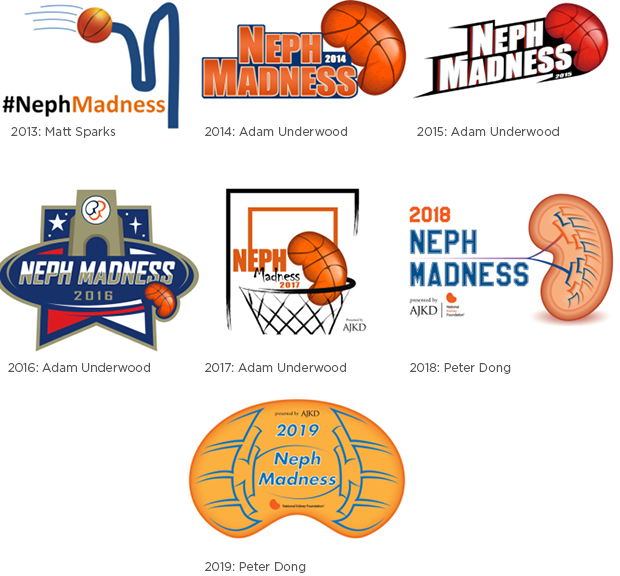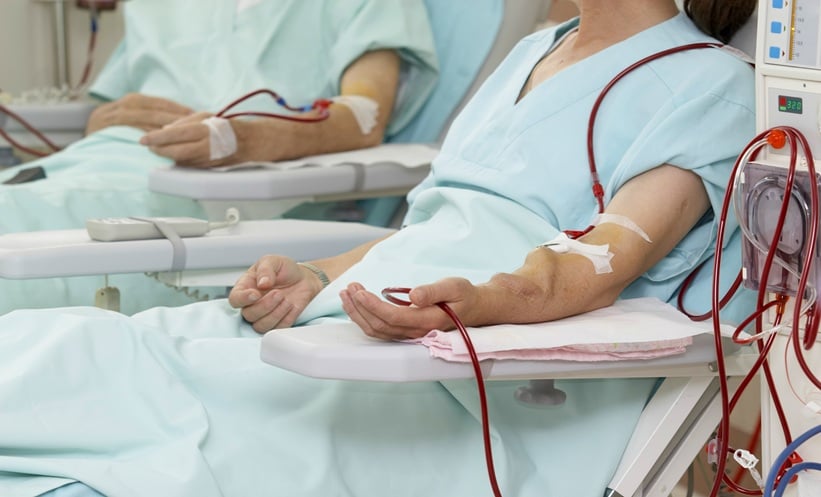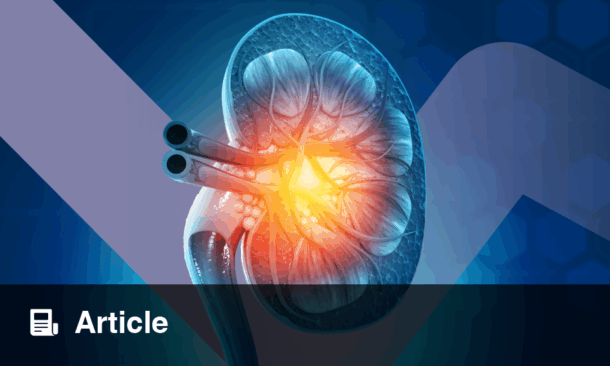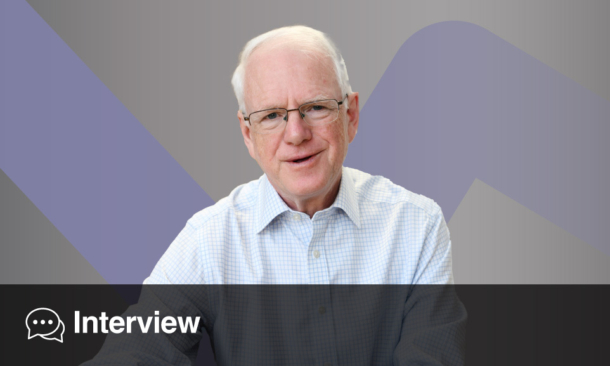BACKGROUND
Metcalfe’s Law states that the value of a network is proportional to the square of the number of connected users.1 So, networks with few users provide low value and each additional user increases the value of the network exponentially. This law makes it particularly difficult for newer, smaller networks to grow because they are low value due to their low population. At the beginning of the decade (circa 2010), nephrology social media was a new, small network. At that time, a core group of bloggers envisioned a large network of engaged and academically minded nephrologists participating in an active, multifaceted, always-on conversation to provide support, answer questions, discuss journal articles, and share resources. To promote this vision and entice nephrologists to participate, they presented at hospital-wide grand rounds, resident teaching rounds, and national meetings.2 Convincing individuals to sign up for a social media account with the intention of professional use was difficult, but even if a person successfully signed up to Twitter, new users would not know what to do, where to look for like-minded nephrologists, or how to engage with peers. Beyond the issue of how to use social media was the fundamental problem that the value proposition of the nephrology social network was low due to its limited size and activity.
An example of the early growth and challenges to building a self-sustaining network of connected nephrologists is the American Society of Nephrology’s (ASN) Kidney Week. Kidney Week is the largest annual meeting of nephrologists from around the world. The growth of Twitter use at Kidney Week every year was steady and it was consistently the busiest time in the nascent nephrology social media community.3 During the conference a flood of nephrologists participated in Twitter. They commented on speakers, promoted their talks, shared pictures of posters, and planned where to get dinner. ASN was a willing partner and made changes to their conference to promote social media. Changes included stopping the ban on photography during presentations and changing the official hashtag from KidneyWk plus the year (e.g., #KidneyWk12, #KidneyWk13) to just #KidneyWk in 2015 to preserve those two characters for the message in a character-limited Twitter post.4,5 However, despite the dramatic Twitter activity during Kidney Week, few of these participants remained in the social media space after the meeting ended. During the conference the network grew in size so that it was highly valuable to participants, but after the conference, use and participation in the network returned to its low, pre-conference state.
To add value to the nephrology social media network, an ethos emerged that content provided on social networks would be accurate, referenced, and open access. This content is labelled free open access medical education (FOAMed) and is a hallmark of medical social media and is not unique to the nephrology sphere.6-9
The core organisers of what was to become NephMadness wanted to create an event to drive individuals to participate in the nephrology social media space. The core question was “Could the enthusiasm of Kidney Week be replicated and sustained to create a persistent, rich, supportive community in social media without an actual conference?”10
ORIGIN STORY
In 2012, Andrew Levey, then Editor in Chief of the American Journal of Kidney Diseases (AJKD), the scientific journal of the National Kidney Foundation (NKF), wanted to engage social media to support the journal. He picked Dr Kenar Jhaveri to create eAJKD, an academic blog, and Dr Jhaveri added several other medical educators using blogs to participate. Among this cohort was Dr Matt Sparks, who was leading the collaborative blog, Renal Fellow Network11 and Dr Joel Topf who was running his personal blog, Precious Bodily Fluids. eAJKD, whose name would later change to AJKD blog, published commentaries about original investigations in the journal as well as interviews with the authors about their research. It built a steady readership and became an important player in the nephrology blogosphere.12
In February 2013, Drs Jhaveri, Sparks, and Topf discussed how the blog should recognise World Kidney Day and National Kidney Month. Dr Topf proposed a campaign wherein the blog produced a facsimile of the NCAA college basketball tournament that occurs every March: March Madness. The central element of this tournament are the ‘brackets’, a graphical representation of the single elimination tournament. The proposal, NephMadness, was to create the nephrology equivalent of the tournament with 64 nephrology concepts or ‘teams’ arranged in a similar bracket. Fans of the basketball tournament try to predict the outcomes of all 63 games in the tournament by “filling out their brackets”.13 NephMadness would offer the nephrology community the same opportunity of predicting the outcomes of this entirely hypothetical tournament of nephrology concepts. The organisers hoped that the NephMadness promotion would pierce the social media bubble and reach a wider community beyond the limited audience of nephrologists already engaged in social media.
To help participants make educated picks for NephMadness, the organisers provided original, fully-referenced, and illustrated descriptions of each concept. These descriptions are called ‘Scouting Reports’. The scouting reports covering all 64 concepts from the first year were >12,000 words long and stretched across 9 posts on the AJKD blog.14 This FOAMed is the primary educational content of NephMadness.
That first year, the tournament was largely produced by Drs Topf and Sparks with help from the other writers on the AJKD blog. The hashtag #NephMadness was used by 77 people in 2013, across 484 tweets during the month-long game. To put those numbers in perspective, 4 months prior, #KidneyWk12 was tweeted 1,283 times by 268 people.
As a result of this positive reception, plans were made to continue the tournament in 2014. Each year a new logo has been designed to help promote and identify the tournament (Figure 1).

Figure 1: The NephMadness logos with the name of their designer.
RINSE, WASH, REPEAT, IMPROVE
The lasting observation from the first year of NephMadness was ‘potential’. Each year after the first iteration, the NephMadness team has attempted to enhance the programme (Table 1). Two innovations for the second year were instrumental to the success of the project:

Table 1: Participation on Twitter and in the contest itself from origin through to 2020, including a timeline of the innovations in the project.
1. Online submission of bracket
2. Recruitment of experts to help craft the brackets
During the first year, there was no way for participants to formally enter and record their entries. The second year, the organisers used Tourneytopia, a company that provides white-labeled, web-based software for running tournaments like March Madness.15 This software allowed the organisers to automatically track and score entries, declare a winner, and provide instant email communication announcing each round of results.
The other innovation was the development of the selection committee. In March Madness, every conference champion gets a bid to go to the tournament. Those champions represent roughly half the field, and the remaining teams are chosen by a selection committee of basketball experts. In NephMadness, the executive team selects the academic regions with input from the community, and then taps an expert on the topic to select the specific concepts to represent the region; these experts are the NephMadness selection committee. The selection committee not only provides expertise, but they also lend credibility to the contest. One of the recurring problems with online medical education is providing credibility.16 Since the platform is inherently democratic, anyone can publish medical information without the checks and editing that mark traditional journal-based, peer-reviewed publications. Doctors are naturally suspicious of this.17 By bringing in well-known thought-leaders, NephMadness was able to diminish this credibility gap. To get high profile experts to work with NephMadness, the executive team does not ask the experts to write the editorial descriptions of the regions. Authors with experience writing for an online audience are brought in to create the blog posts describing the concepts. The selection committee members help to proof and endorse these reports before they are posted online.18 The writing of the scouting reports is done by the entire NephMadness team.
During the second year the audience roughly doubled, but with the new, online bracket submission and scoring there was a lot more attention on the winners of the hypothetical match-ups. In 2013 and 2014, NephMadness used a combination of majority wins (the concept with the most support won the match-up) and ‘Joel and Matt Decide’ to determine the winners. This resulted in plenty of participants being upset with the advancing teams and concepts;19 however, the majority in a poll wanted to continue to use the ‘Joel and Matt Decide’ method.20 For 2015, the NephMadness executives instituted a Blue Ribbon Panel to determine the winners of the 63 match-ups in NephMadness. The Blue Ribbon Panel consisted of a hand-picked group of seven educators, editors, and leaders in the field of nephrology who voted on every match-up in the bracket. The Blue Ribbon Panel remains an essential component of the tournament and was expanded to nine members in 2019.
Not every innovation was successful or was planned and implemented by the executive team. In 2015, NephMadness partnered with Medscape. The idea was to leverage the large audience of a general medicine website to increase engagement with NephMadness. This collaboration added complexity to NephMadness as the content appeared on both the Medscape website as well as the AJKD blog. Unfortunately, participation did not increase beyond the organic growth typically seen from year to year. Similarly, NephMadness also partnered with Visible Health in 2015 to produce a NephMadness iPad and iPhone app to display the NephMadness content.21 This added complexity to the game but did little to expand the pool of players. Both the iPad app and the collaboration with Medscape were not continued the following years.
The most interesting innovation, at least from the executive committee’s perspective, came from the crowd and not the organisers. In 2016, the Blue Ribbon Panel voted that blood pressure control was more important for nephroprotection than for heart protection. The data for cardiovascular protection from blood pressure control is clear and consistent, while blood pressure’s role in slowing progressive kidney failure is mixed with no convincing interventional data showing improvement in kidney outcomes from better blood pressure control.22 Following the announcement of the Blue Ribbon Panel decision, NephMadness participants took to Twitter to complain under the hashtag #BlueRibbonFail. The ‘mistake’ by the Blue Ribbon Panel sparked controversy and engaged the participants in a way that a correct call never would. The Blue Ribbon published a response justifying their decisions which furthered the online conversation.23
SUCCESSION
With 7 years of running the programme, there have been significant changes in the executive and editorial teams responsible for NephMadness. The most significant of these occurred in 2016, when Dr Andrew Levey and his team at Tufts University, Boston, Massachusetts, USA, completed their second 5-year term as editor of AJKD. The editorship shifted to the University of Pennsylvania, Philadelphia, Pennsylvania, USA, under the direction of Dr Harold Feldman.1 In January 2017, Dr Jhaveri passed the editorship of the AJKD blog to Dr Tim Yau of Washington University in St. Louis, Missouri, USA.24 As part of his role at AJKD blog, Dr Yau assumed a leadership role in NephMadness. The following year, Dr Anna Burgner of Vanderbilt University, Nashville, Tennessee, USA, was added to the leadership team of NephMadness. Most recently, Samira Farouk, Icahn School of Medicine at Mount Sinai, New York City, New York, USA, has joined the team for 2020.
With new leaders comes new ideas. Dr Burgner spearheaded the addition of Continuing Medical Education (CME) credit to NephMadness.25 In 2019, American Board of Internal Medicine Maintenance of Certification (MOC) credit was offered.26 These additions pay dividends, not only in providing credit for people who desire it, but the process of getting the educational materials certified for CME and MOC meant an additional round of critical review of the material, further increasing the quality of the content produced. CME and MOC also provide a signal that this content is reliable, providing additional credibility to the whole concept.
REACH AND CHALLENGES
In 2019, NephMadness had almost 1,400 people fill out brackets from 53 countries. Parties celebrating NephMadness took place on four continents. Over 1,700 people tweeted 8,000 times about the contest. NephMadness partnered with the popular internal medicine podcast, ‘The Curbsiders’, and recorded four podcasts covering roughly half of the core content of the game. Each of these podcasts was downloaded >30,000 times and 60% of people listened to the entire episode.27 Traffic to the AJKD blog website was its highest ever and surpassed 1 million views. NephMadness continues to provide an innovative way to create and share nephrology FOAMed.
Despite the apparent success of NephMadness, the concept as currently implemented has some fundamental problems that limit its effectiveness as an ambassador for FOAMed. NephMadness is complex. One significant barrier to participation is the presence of two disparate websites. The NephMadness website at AJKD blog houses all the educational content, but participants must register and fill out their bracket at a separate website, Tourneytopia.
During the first year of NephMadness, 50 pages of editorial content was released all at once. In 2016, the NephMadness field was trimmed from 64 to 32 concepts, but there still were roughly 30 pages of content released at the start of the contest. This initial content is followed by invited editorials by experts providing additional content. For many social media users, this amount of medical educational content can feel overwhelming.
Additionally, just over half of participants in NephMadness are from outside the USA. As more of the participants come from outside the USA, a game based on a USA college basketball tournament makes less sense.
One of the stated goals of NephMadness was to promote engagement on social media and then remain active after the contest finished. Judging from the Twitter participation numbers, NephMadness has succeeded in the former but the latter is difficult to measure. The authors’ sense that, like ASN’s Kidney Week, many come to social media for the game, but do not continue to participate once the event is completed.
The executive team recognises these challenges and has ideas and innovations that will be trialed in 2020 to continue to make NephMadness even better. With these innovations, they hope to inspire NephMadness participants to not just play the game, but to stick around the rest of the year, engaging with the nephrology social media community and exponentially increase the value of the network and discussions online.







